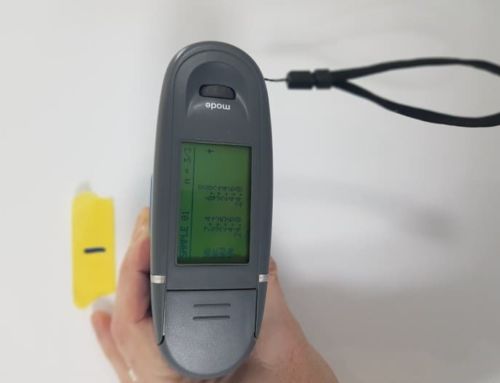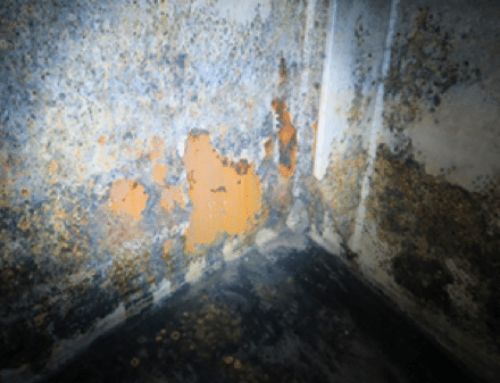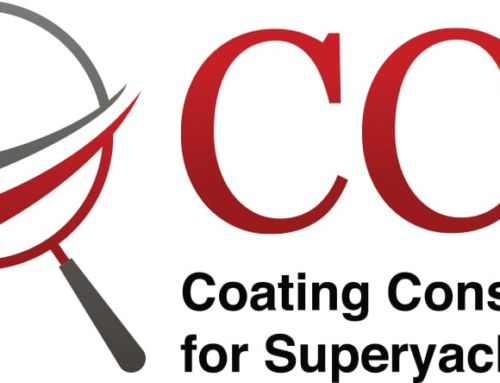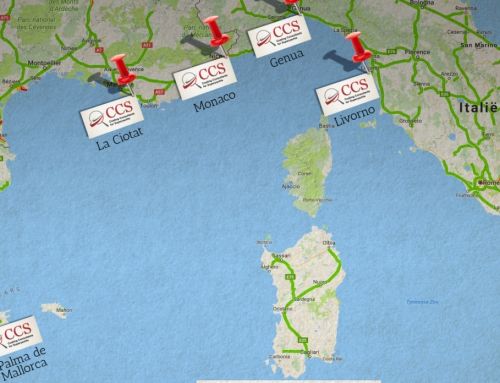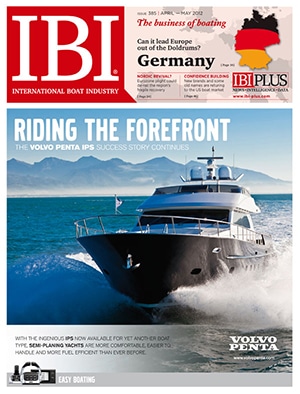 Pre buildplanning and sequencing is a fresh concept introduced to the coatings sector as a cost-effective approach for new build projects. Article by Malcolm Kerr and Joop Ellenbroek as featured in the December 2014 issue of IBI Superyacht Business.
Pre buildplanning and sequencing is a fresh concept introduced to the coatings sector as a cost-effective approach for new build projects. Article by Malcolm Kerr and Joop Ellenbroek as featured in the December 2014 issue of IBI Superyacht Business.
Much has changed in the last twenty or so years within the superyacht coatings industry. Products have evolved and will continue to do so as the world takes a more responsible approach to the environment and the creatures that live within it. The day of water based products across the board seems a way off, yet we have gotten much closer in recent times.
The product; the superyacht itself has changed almost unrecognisably. Twenty years ago one would have balked at the idea of a 160m yacht. Today, despite still turning most heads, it is not the unheard of concept of days of yore. This, in turn, has meant increasinlgy more complex projects, requiring ever more control and planning. It is this fact that is fundamental. The more detailed planning and forethought we exercise, the more efficient the process, the more cost effective we become and, ultimately, the greater the chance of an on time delivery.
Another major change since the the mid 90’s is the differing approach in how coating systems and applications are managed and controlled.
“In the early days of paint inspectors, the mere mention of the aforementioned words was enough to send shivers down any applicator or shipyards’ respective spines.”
In those days, paint inspections were almost always a retrospective action. A paint inspector would be tasked with checking the completed job for defects and, some would say, reasons to reject, or as a minimum contest a paint job. To this day, this approach is still common and few shipyards have escaped the financial damage relating to a ‘rejected paint job’ in recent years.
Many potential solutions have been discussed in forums such as SYBAss or working groups such as International Council of Marine Industry Associations (ICOMIA).
One such solution is the standardisation of parameters and acceptance levels across the board, thereby creating a benchmark for all parties from owner, to applicator, to shipyard. Setting a minimal level for all measureable areas of coating and aplication systems, if you like. The aim of this standard is to reduce the subjectivity of the quality of a painted surface and define what an acceptable paint job looks like, albeit from a measuring perspective. Each parameter will have a method by which it can be measured and a minimal level it has to attain.
Another potential solution, or at least a help in reducing contestations, arbitrations and the likes is the certification of the ‘inspector’. In our industry the most recognised qualifications for a coatings inspector are either NACE, FROSIO or Icorr, yet none of these qualification focuses quite precisely enough on the world of superyacht coatings. In a response, the first specific course and qualification for superyacht coatings inspectors has now seen the light.
Qualified inspection
The Registered Marine Coatings Inspectors (RMCI) qualification was instigated by the SuperYacht Builders Association (SYBAss) in conjunction with the International Council of Marine Industry Associations (ICOMIA) and working with the International Institute of Marine Surveyors (IIMS) and the Institute of Corrosion (ICorr). The course, the qualification and the certification system were produced in response to the request from these bodies.
The ultimate aim is to raise the standards of inspection and to ensure that the highest levels of independence are maintained.The aim in the short term is to educate and recognise this specific need in the industry. The aim in the medium to long term is to regulate the world of coatings inspectors by enforcing this qualification upon anyone in a position whereby they will be checking or controlling a coating system. The idea is that in the future a business card stating ‘paint inspector’ will no longer suffice and it can be expected that shipyards will in the future no longer accept uncertified paint inspectors on their premises.
CCS Yacht Coating Services played a role in the conception of the qualification. The company took part in writing the course materials and it will also play a role during the courses itself.
However, another solution exists. This is the efficient managing of the project from the moment a concept or design is born, to the delivery of project itself and through the period of guarantee. This could be deemed a prevention, not cure process. This concept can be called many things. We have decided to name it “ Pre build planning and sequencing”
Sequencing and pre build planning. Do not underestimate the importance
We at CCS are constantly looking for ways to both ensure and improve quality in the coatings’industry. In our twenty years we have often only been called on an arbitration basis after serious problems arise, With the current market it is more important than ever, for all parties, that projects run smoothly, on time, with a minimum of guarantee issues and to higher standards than ever before. Owners need positivity and to be sure of the best product at the best value, whilst shipyards and applicators need projects delivered on time, to the necessary quality and within budget.
Having the best facilities, the best shipyard, the best applicators and the best specification is not always a guarantee of an acceptable end product. One of the most important factors, especially in a new build project, is detailed & correct programming and sequencing.
To define “sequencing”, we mean working in an efficient manner by following a set and defined work process and in the correct order, thereby limiting rework, repairs and the likes.
Sequencing problems more than often come from Production or Technical Office issues but in this ever more challenging economic world, purchasing offices are more than ever becoming as culpable. Orders not appropriately managed, in an effort to delay payments or manage cash flow, have long lasting affects on the production of a superyacht’s build schedule. The late ordering of handrail bases or fairleads, for example, will have a huge impact on the fairing process that leave only two options …….. 1 – put fairing on hold thereby delaying the project, or 2- leaving respective areas to be worked on at a later stage and subsequently creating a ‘repair’ and a future potential quality and/or guarantee issue.

More emphasis on sequencing and pre build planning results in better working conditions, fewer conflicting work activities and ultimately, better results.
At the same time, Owners (and their representatives) need to take a similar responsibility for sequencing issues. An owner’s representative needs to understand all the implications involved in late change orders for example. Clear indications and dates need to be established at the spec/contract phase which specify milestones or dates, after which changes, without serious implications, can no longer be made. It is important to note that perhaps, at the time of launch or delivery, certain issues may not be apparent but more and more, problems are arising in the guarantee period that are a direct result of bad sequencing. All of these problems could, through efficient managing of a project, be avoided.
Managing the sequencing process in a superyacht new build
One of the proven methods for reducing problems and subsequently costs is to provide project support by means of an experienced paint consultant with proven knowledge in the sequencing of a superyacht build.
“The involvement of an experienced coatings’ surveyor or consultant, despite having what may seem as an additional cost, is becoming ever more a tool with which to help ensure the smooth running of a project.
This efficient running of a project which minimises delays and focuses on defect prevention more than pays for itself over the lifetime of said project. The earlier the consultant can become involved in a project, the better for all concerned. Said consultant should be a key player from the moment the first designs are penned.
What sometimes may seem aesthetically pleasing on an architects drawing board is often an applicator’s worst nightmare. Detailed areas that may give that something extra (on paper) to an external surface of a large yacht may in reality be inpracticle from a surface preparation and painting perspective. Yachts must be designed in a manner that allows ISO standards for surface preparation and painting to be applied to the spec, thus giving the applicator clear and defined objectives.
The more an experienced eye can be cast over a drawing prior to said drawing becoming a reality, the better. An example regularly found is detailed recessed slots on external superstructures. An initial height of 100mm on paper may seem adequate but in reality, surface preparation is an issue. The height whilst detailing (fairing) over a 40+metre length, may well be reduced to perhaps 50% as an applicator alligns the recess. The slot then becomes difficult to paint or at least, respect the defined WFT/DFTs. Inadequate WFT/DFTs more often than not lead to maintenance issues in time. Maintenance issues mean time and money!
Prevention not cure
We have mentioned previously the idea of prevention as opposed to cure. The logic is clear …… stop a problem prior to it happenning thereby avoiding said problem in the first place.
In today’s economic climate we are forever seeking more cost efficient ways to work and produce a finished article. The superyacht industry has not been immune to cost cutting despite being at the far end of the opulence spectrum. Some would suggest that this cost cutting has led to an increase in problems and a decrease in quality. The challenge today is to produce more efficiently and do so with higher quality than ever.
This can be accomplished by only one means and that being effective management and a stringent quality control procedure throughout each and every work process. Within these processes, the fundamental issue is sequencing. Without this, it is virtually impossible to be competitive in today’s market.

